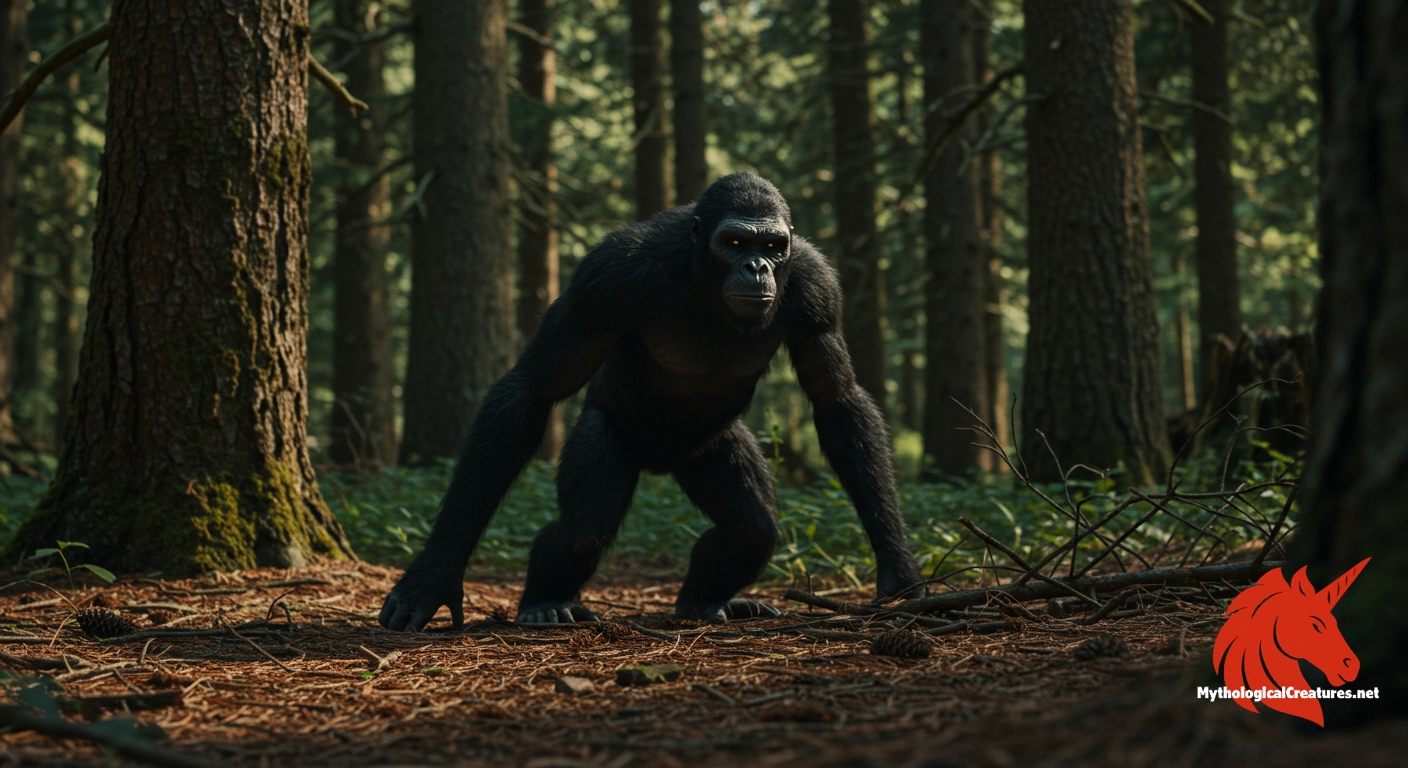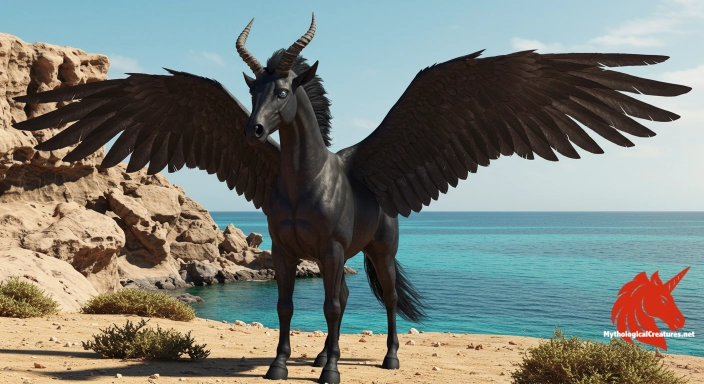Agropelter: The Agropelter is a fearsome critter from North American folklore known for its branch-hurling attacks from the safety of hollow trees.

Agropelter
Agropelter - Serves as an explanation for mysterious forest accidents and disappearances; embodies the unpredictable perils of nature.
Origins & First Encounters
The Agropelter, designated as Anthrocephalus craniofractens, embodies a mysterious figure woven into North American folklore, particularly among the logging communities that once thrived in the dense conifer forests from Maine to Oregon. It originated as a cautionary tale meant to explain the sudden and unaccountable accidents in the wilderness, and its first attestation can be traced back to the oral traditions of frontiersmen and timber workers. Emerging from the interplay between man and an untamable nature, the creature is portrayed as both a mischievous and menacing spirit of the woods. Early narratives present it as an unseen predator, concealing itself within hollow trees while awaiting an unfortunate wanderer. Its elusive character and ghost-like manoeuvres symbolise the inherent unpredictability of the forest environment. The legend was perpetuated over time in environments where the dangers of nature were both real and magnified by human imagination. Recounted in a variety of settings, its myth quickly acquired additional traits that highlighted the mysterious rhythms and rituals of woodland life. Over successive generations, the Agropelter became not only an emblem of nature’s hidden perils but also a character that encapsulated the wonder and trepidation believed to pervade the vast wilderness.
Source Texts & Tale Variants
Accounts of the Agropelter have been preserved in an extensive array of folklore and anecdotal narratives rather than in formal ancient manuscripts. These accounts appear predominantly in the oral histories passed along by loggers, surveyors, and rural habitants who recounted eerie encounters in hidden patches of the forest. Many of these accounts describe incidents in which branches and splinters were mysteriously hurled through the air, lending a tangible edge to the creature’s elusive reputation. One particularly vivid narrative tells of a pioneer surveyor who was reportedly kidnapped and fed raw fish by the beast, a story that has since evolved into a cautionary parable. Other versions detail its predilection for attacking intruders from the high canopies of ancient trees, often involving elaborate details such as the timing of its offspring’s births on February 29. Variations in these stories lend the legend both regional diversity and a richness that transcends any singular written source. The multiple narrations serve as a cultural repository, reflecting the human need to assign meaning to unexplained phenomena in the natural world. By drawing on these diverse strands, the Agropelter’s lore continues to fascinate and intrigue those who explore the margins of myth and reality.
Form & Powers
Descriptions of the Agropelter offer a blend of ferocity and peculiar anatomical detail that renders it both intimidating and enigmatic. Its figure is often portrayed as slender and wiry, suggesting a creature designed for swift, agile movement amidst dense forest shadows. Depictions of its face carry a sinister quality, with some accounts likening its expression to that of an ape, complete with a villainous, almost mocking countenance. An alternative account evokes the image of a fully furred gorilla-like head, adding layers of primate resemblance to its character. Notably, its arms are described as muscular whiplashes, capable of snapping off dead branches with the accuracy and force of a projectile. The creature’s overall coat is typically said to be completely black, save for an ash-grey, skull-like pattern that highlights its facial features with stark contrast. Observers in these tales have remarked upon its apparent asymmetry—a physique that, while varying slightly between accounts, consistently emphasises both lethal precision and unorthodox beauty. Each physical description adds to the tapestry of its legend, ensuring that no single depiction can completely encapsulate the Agropelter’s uncanny form.
Regional Faces
The mythology of the Agropelter reveals subtle yet intriguing regional differences that mirror the diverse ecologies and cultural landscapes of North America. In the woodlands of Maine, local accounts tend to present the creature as a shadowy warden of the forest, a spectral guardian whose sudden attacks symbolise the wild unpredictability of nature. Meanwhile, in the expansive forests of Oregon, its narrative is interwoven with the rugged realities of the timber industry and the isolated life of frontier settlements. Regional storytellers have adapted its image to reflect local superstitions, sometimes portraying it with more human-like cunning and at other times as an almost elemental force of nature. Variants of the tale may emphasise different physical traits—from a more ape-like visage in one locale to a bear-like body in another—demonstrating the fluidity of its character. Each regional version retains the core motif of an unseen presence that hurls branches and instils trepidation in forest travellers. Such adaptations attest to the creature’s capacity to evolve and resonate with local experiences of risk and mystery. In this way, the Agropelter stands as a testament to how folklore can be continually reshaped to address the evolving challenges and imaginations of distinct communities.
Cultural Parallels
Across a broad spectrum of myth, the Agropelter finds itself in company with other legendary forest denizens that blend supernatural prowess with cautionary resonance. It stands alongside North American legends like the Hodag and even shares an undercurrent of mystery akin to cryptids such as Sasquatch, albeit with distinct traits of its own. Other mythologies, particularly in Europe and Asia, also feature elusive woodland creatures whose inexplicable actions account for the unpredictable moods of nature. As a scapegoat for unexplained accidents, the Agropelter echoes traditional figures that exist to supply a narrative for the unaccountable forces of the environment. Its method of hurling branches—almost as if invoking an elemental punisher—resonates with tales where nature’s wrath is personified through fantastical beasts. In similar cultural contexts, dangerous spectres and wild men have been invoked to symbolise the boundary between civilisation and untamed nature. This comparative perspective highlights both the universal themes present in global folklore and the Agropelter’s unique imprint within the North American tradition. In blending humour, fear, and environmental allegory, the creature occupies a distinctive niche reflective of a broader human impetus to mythologise the natural world.
Legacy & Modern Evolution
The Agropelter has journeyed far beyond its humble origins as a whispered legend among loggers, evolving into a symbol that captures the perennial clash between industrial progress and the untamable wild. Over time, its myth has been adapted to both entertain and caution, reflecting shifts in societal attitudes towards nature and environmental risk. Modern retellings in literature, visual arts, and local folklore festivals have embraced the creature as a quirky yet ominous icon of the wilderness. While early accounts attributed human misfortunes and mysterious disappearances to its vengeful acts, contemporary interpretations often blend humour with a more reflective, almost nostalgic, regard for the ineffable wild. The Agropelter is now frequently featured in discussions of American cryptid lore, and its image has even appeared in modern media and popular culture events. Its continuing presence in folklore underscores how communities use myth to negotiate the balance between respect for nature’s power and the desire to demystify it. As scholars and enthusiasts alike explore the evolution of forest legends, the creature’s story provides valuable insights into local identity and the changing perceptions of wilderness. In every retelling, the Agropelter endures as both a vibrant reminder of the past and as an enigmatic muse for contemporary environmental narratives.
Interesting Fact
Its unique reproductive timing and the mysterious, odd-numbered birth of its pups contribute to its enduring legend among lumberjacks and forest inhabitants.
Quick Creature Info
Origin:
Associations:
Our Mythic Legendary Rating:

Habitat:
Supernatural Powers:
Physical Attributes:
Abilities:
Behavior:
Lore:
References
Discover Another Mythical Legend You May Not Have Heard Of?
Uncover the mysteries of ancient folklore and expand your knowledge of legendary beings from cultures around the world.
Dare to Meet the Ethiopian pegasus....
Curated by the Mythological Creatures Team (rev. May 2025)
